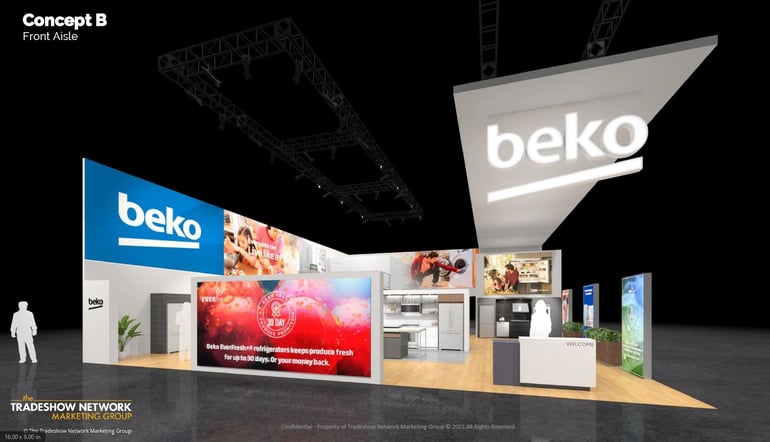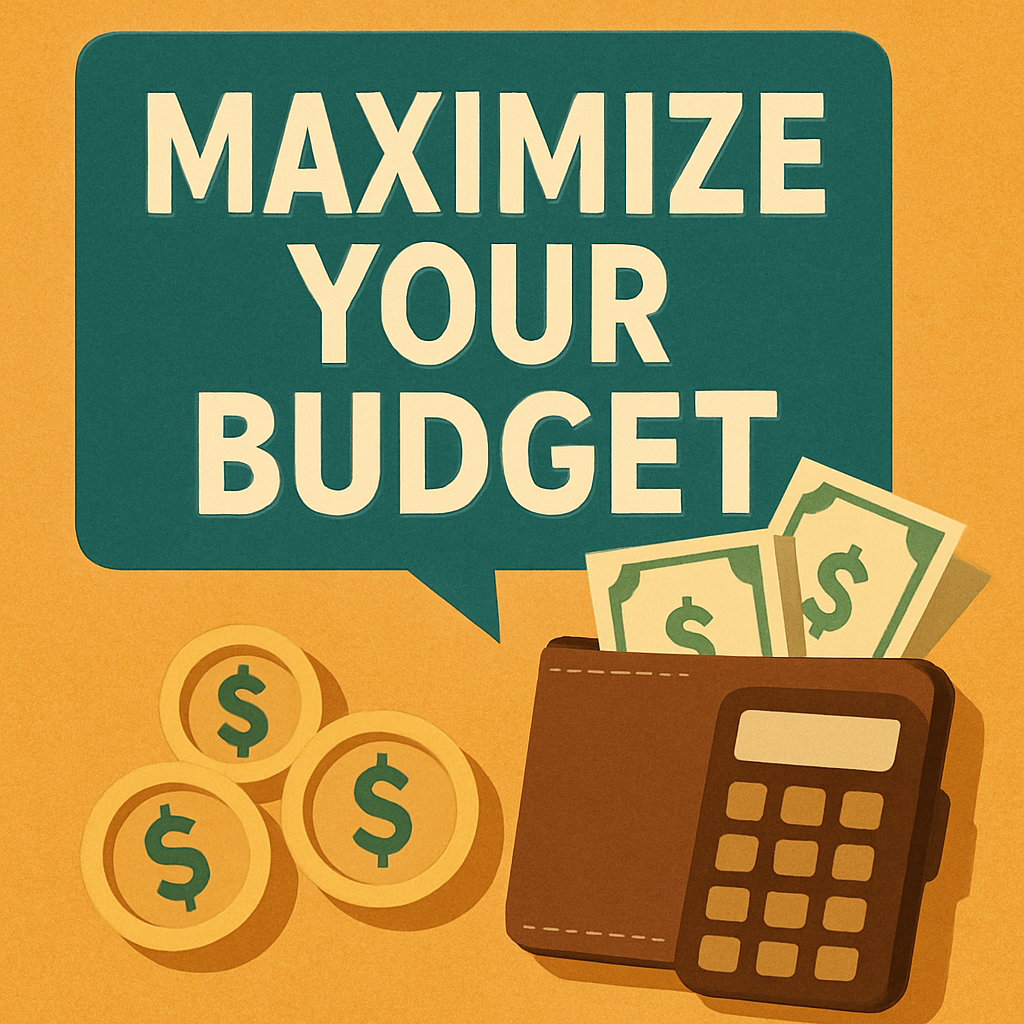Not all trade show booths are created equal. Each type of display has its proper place, depending on the size of the show, your marketing objectives and your budget. Some companies use different types and sizes of exhibits for different shows, while others rely on just one exhibit for all shows. Knowing your options for trade show displays will help you choose and plan wisely. What constitutes a display? A trade show display, or an exhibit stand as the Europeans call it, is a graphical display device designed to be used at an event, trade show or trade fair to convey your marketing messages and represent your brand. Exhibit types range from pop-up devices and tabletop displays to typical 20 by 20-foot exhibits to giant, custom booths that make a big statement.
Types of trade show displays
Displays available for purchase vary greatly in size, cost and complexity, but all are designed to visually represent a specific solution, product, or strength of the company. Trade show displays use bold graphic images and powerful messages to attract attention and visitors to the exhibit space. The space itself should be designed to fit the marketing activities you plan for the show, whether you want sales representatives to give a company pitch in person, show a video demonstration, hand out brochures, provide educational information, or capture prospects’ names and validate their need for your products and services.
displays use bold graphic images and powerful messages to attract attention and visitors to the exhibit space. The space itself should be designed to fit the marketing activities you plan for the show, whether you want sales representatives to give a company pitch in person, show a video demonstration, hand out brochures, provide educational information, or capture prospects’ names and validate their need for your products and services.
Custom exhibits:
Available for rental or purchase, custom exhibits are generally larger than a simple booth. The exhibit is custom designed for the booth space and fabricated from a variety of materials, based upon the design and the needs of the exhibitor. Custom exhibits often incorporate lined wall panels to create rooms and separate spaces, stages, large structures, display and workstations, and other components. Because of their size and complexity, custom exhibits cannot normally be set up by the exhibitor’s staff. Most shows require that large booths be set up by using the services of an approved onsite labor source, whether through the show’s general contractor or a labor contractor approved by show management.
Modular exhibits:
Standardized exhibit structures or modules are used to create the booth, which falls somewhere between a portable or fabric trade show display and a panel and frame system. A modular display is designed to fill the entire exhibit space. The structural elements may be a metal framework or a thin, lightweight panel construction, which is then configured within the confines of the structure limitations to what the exhibitor requires. A study by Trade Show Week Magazine showed that modular exhibits weigh, on average, about 60% less than traditional custom exhibits, which makes them less expensive to ship. The modular nature of the components means that they can be typically easily reconfigured into new layouts as the exhibitor may require from show to show. Depending on the size and weight of the components, modular displays can be transported in small traveling cases, often made of injection-molded plastic, and checked on an airplane or transported in a small vehicle, rather than being shipped by truck.
Portable displays:
A portable is typically a small background piece for a booth space, such as a display wall constructed for ease of use and set-up. Pop-ups incorporate a flexible graphic panel, made of fabric or other man-made material, which is attached to a spring-loaded roller on which the graphic winds for storage. When ready to display, the graphic can be pulled up and then secured to a support post at the back of the roller, which holds the graphic taut in place. Most often curved in shape, pop-ups also are now popular as straight walls with attached fabric mural graphics. Portables can be used individually, or in a series, as needed. Like tabletop displays, they are normally very lightweight and can be easily transported in small traveling cases, without needing much, if any, on-site labor support for set-up. However, some shows require labor for elements such as electricity so it is important to check the show rules before assuming you can handle all the set-up yourself.
Sizes and configurations of trade show displays
The typical booth size in North America starts at 10 by 10 feet (3 by 3 meters). Exhibitors can typically rent space at trade show events in multiples of the standard 10 by 10-foot space. For example, renting two 10 by 10-foot spaces beside each other would form a 10 by 20-foot space; renting four 10 by 10-foot spaces in a square would form an exhibit space of 20 by 20 feet (6.1 m by 6.1 m). In Europe and Asia, exhibit spaces are typically measured in one-meter increments, with the smallest typically being 3 by 3 meters (9.8 by 9.8 feet).
The show floor is organized by arranging the various exhibitors based upon their booth spatial requests. Regardless of geography, the realities dictate that all displays on a trade show floor will fall into one of several configurations:
Linear booth (in-line booth): An exhibit space with booths in a row on either side and/or behind in another row facing a different aisle
Peninsula exhibit: An exhibit or area that stands apart from other exhibits with aisles on three sides, which is usually 20 by 20 feet or larger
Split-island exhibit: A peninsula booth that shares a common back wall with another peninsula booth
Island exhibit: Any booth exposed to aisles on all four sides, which is virtually always 20 by 20 feet (6.1 by 6.1 m) or larger
Keep in mind that the most popular shows book early. If you have your eye on a prime location on the show floor, you will need to put in your space request as soon as exhibitor registration opens for the next year.
Types of trade show display materials
A wide variety of materials are used to construct your exhibit, which is something of a graphic billboard, at a trade show event. The traditional materials are wood laminate, fabric, and metal frames. The largest trend today in material is to make it lightweight and easily packable. The sublimated tension fabric used in booths today is designed to reduce weight and set-up/dismantle time. The tension fabric graphics can make a big impact, typically using dye-sublimation printing. The most recent method for attaching these fabric graphics to modular aluminum frames is to use SEG or Silicone Edge Graphics, which employ a plastic strip or bead at the edge of the graphic that is pressed into a groove on the aluminum frame. While at the Exhibitor Show, we saw that these frames, that where once stationary, are now flexible, mounted with swivels and hooks, which gives the graphic design department enhanced abilities to created totally out-of-the-box booths.
Rental vs. purchase
For years, the trade show display business was dominated by the notion of the exhibitor owning their exhibit properties, which they purchased from an exhibit firm. A number of reasons led to the popularity of purchasing exhibits, including accounting realities and the cultural history of the industry itself. But in recent years, all this has begun change. At one time, rental exhibits would have been a category in the list above. In the past, a rental exhibit would have been viewed as a specific type of exhibit, usually a property owned by an outside vendor – either the show general contractor or an outside rental exhibit company. Older versions of rentals were stock properties in standard configurations or slightly modified, which gave the exhibitor a less-than-outstanding look. This is no longer the case. The exhibit industry now treats rental and purchase of an exhibit primarily as alternative financial strategies. The rental exhibit itself can be designed to create a custom look. These days virtually any type or quality of trade show display can be rented or purchased, depending on the exhibitor’s preference.
In some markets, such as North America and Europe, rental provides lower initial and even lower overall costs, due to high costs of trade show exhibit ownership, which includes such items as storage and maintenance. Rentals today deliver greater flexibility whereas purchase provides certain undeniable accounting benefits. Consumers of trade show displays in these markets must weigh their options to determine what works best for their situation. In other markets, such as most of Asia, raw materials and labor are so low priced that rental is rarely competitive and disposable booths are the norm.
Global differences in approach
Differences in how trade show displays are approached vary on the locale. In South America, Europe and Asia, it is much more common to have what is known in the industry as “build and burn” exhibits, which are fabricated and set up just for one show.
In North America, it is more common for exhibitors to purchase the booth and use it many times for different shows before it is either re-purposed or disposed. In the U.S., most exhibitors think of the booth as a highway billboard, where you only have about five to seven seconds to grab someone’s attention before they speed by to the next booth.
In Europe, trade shows have much longer hours and the emphasis is on longer meetings and actually closing deals. Therefore, displays are built to facilitate longer meetings, including more comfortable seating and hospitality areas to serve food and beverages.
Trade shows also have their own rules about what can be done in an exhibit, so it is best to always check the show rules first.
Good reasons to exhibit at a trade show
The global trade show industry serves a staggeringly wide and varied audience, typically aimed at consumers, businesses or both. Companies may also want to exhibit at a trade association conference, where the focus is on education. More than one thousand industries sponsor shows devoted to their business, and each industry has their own unique way of implementing those shows. Some can be more educational while others are focused on hands-on experiences or just plain old networking.
Regardless, there are numerous reasons for exhibitors to invest in a trade show booth:
- To sell and promote a product or service
- To launch a new product or service
- To create an impression and build the brand
- To boost sales and reinforce market share
- To build relationships with prospects and customers and cross-sell products
- To reposition your organization, brand and product line
Start with a plan!
If you’re ready to explore the advantages of marketing through trade shows, begin by asking yourself a few questions:
- What is the purpose of the booth?
- Based on the purpose of the booth, what are the functional needs for the space?
- What technical specifications are required?
- Are there any other considerations you need to plan for?
- Do you need a booth that can easily be assembled and disassembled by one person?
- Does the display need to meet specific weight considerations for shipping?
Once you have determined your exhibit goals, do some comparison shopping with exhibit firms that design displays that meet your criteria. Request their design ideas and estimates for purchasing vs. renting. You may want to consider a trade show exhibit design company that is in your local area or close to the biggest show on your calendar. Think about establishing a long-term relationship with this firm so that they can not only design and build your exhibit but also manage your exhibit properties for all your trade show events.





